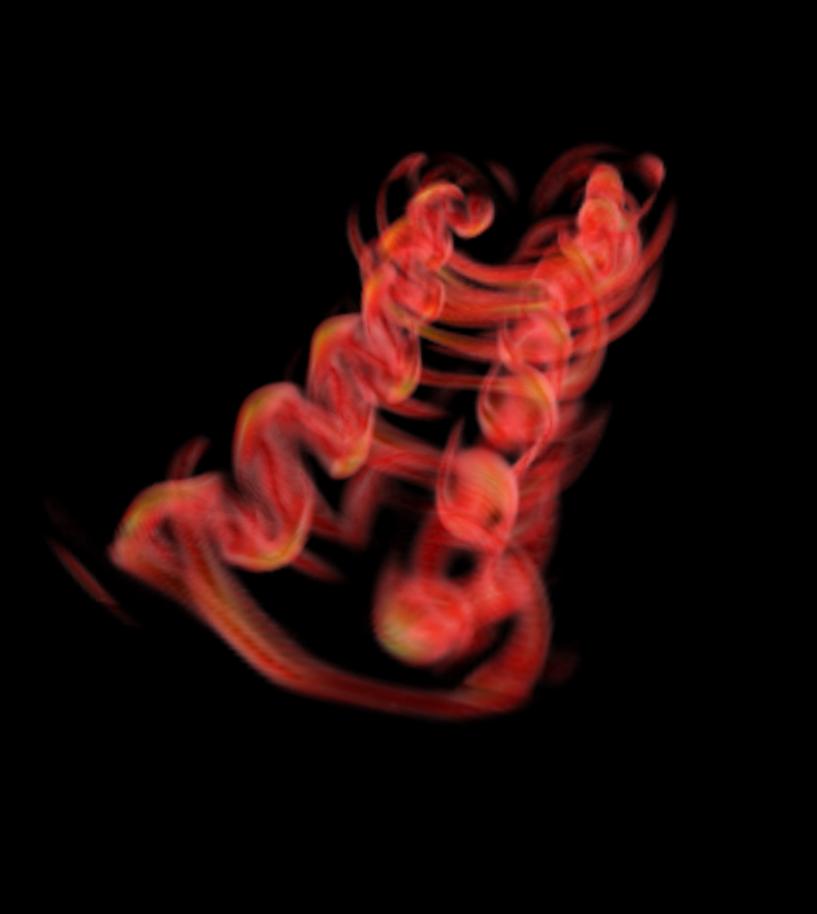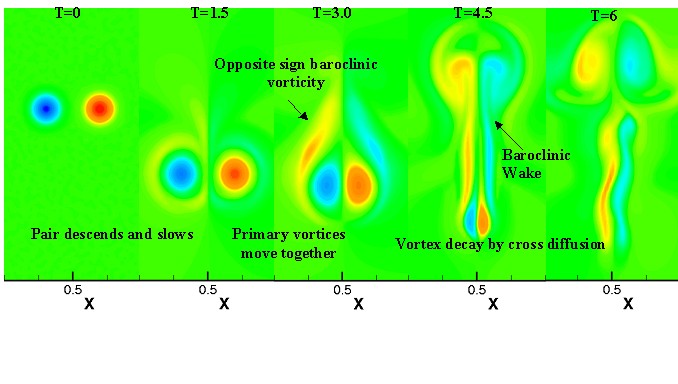Numerical Simulations of a Counter-rotating Vortex Pair
Collaborator: Jim Rottman
Graduate Student Researchers:
Hideaki Tsutsui, Julie Crockett
Description
The evolution of a pair of counter-rotating parallel vortices
is investigated using three-dimensional
direct numerical simulations. Such a flow may be encountered
in the wake of an aircraft. The strong vortices
of a large aircraft, particularly during take-off and landing, can pose a
serious threat to following aircraft and is a limiting factor for airport traffic.
The study of the mechanisms by which these vortices decay and breakdown
is therefore of great practical importance.
The dynamics of coherent vortices
are also of fundamental interest as they are the basic elements of turbulent flows.
Late stage development of counter-rotating vortex pair
in unstratified fluid
(Visualization by Michael Bailey, SDSC). |
 |
The inherent instabilities in the flow can promote vortex decay and result
in their destruction.
In general, a counter-rotating vortex pair may exhibit
a short wave (elliptic) instability and a long wave (Crow) instability.
The short wave instability is associated
with the ellipticity of the streamlines in the vortex cores
due to the strain induced by one vortex on the other.
The vortices exhibit a sinusoidal antisymmetric deformation with
wavelength on the order of
the initial vortex spacing, bo.
The Crow instability
exhibits a symmetric deformation with wavelength of order 10(bo).
This study focuses on the short wave instability.
This instability has been observed in the unstratified
laboratory experiments of Leweke and Williamson (1998).
The objective of our current research is to investigate
the effects of stable density stratification on the
short wave instability and subsequent breakdown of the flow.
To fully investigate
the associated physics, three-dimensional simulations with high spatial
resolution are required.
Our simulation results
show an earlier onset and higher growth rate with stable stratification. This is
due to the enhanced strain that occurs when the vortices move
closer together as a result of the generated baroclinic torque.
With relatively weak stratification, the wavelength of the instability
remains comparable to that in the unstratified case and a significant
increase in the growth rate is exhibited. For stronger
stratification, the form of the instability becomes more
complex and the growth rate is less than that for weak
stratification.
Development of vortex pair in strongly stratified fluid (Re = 2400, Fr=1).



